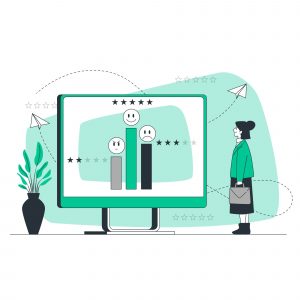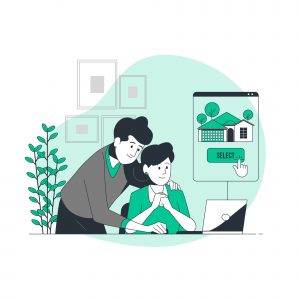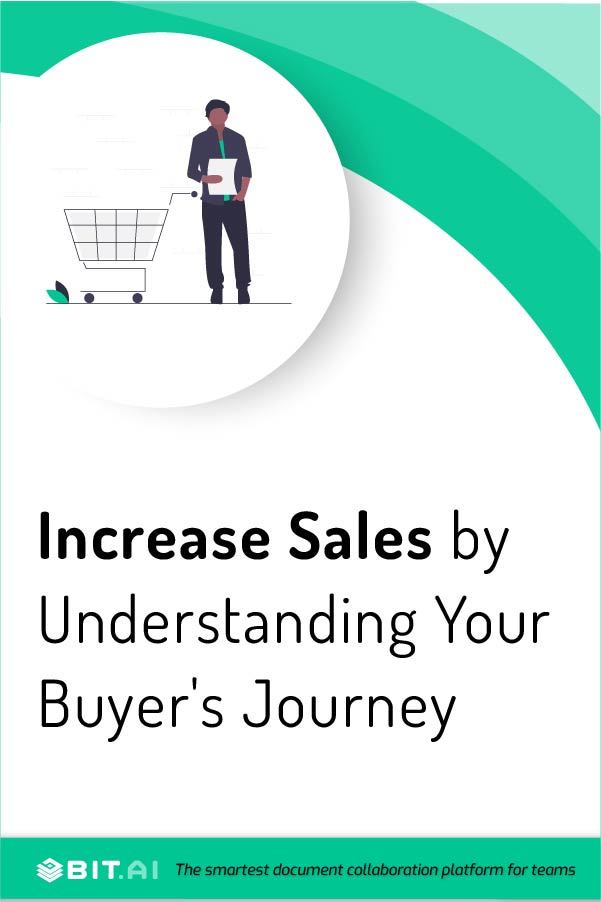In the current market scenario, the consumers hold all the power, not the sellers.
Consumers have all the information they need right at their fingertips – about your business, the services and products you offer, and your competitors.
This means that consumers are now smarter than ever. They no longer pay heed to those cliche and old marketing strategies. Take a look at these stats:
- 86% of TV viewers skip ads on their DVRs. (Source)
- It takes an average of 8 cold call attempts to reach a prospect. (Source)
- 44% of direct mail is never opened. (Source)
So, what’s the solution? How would you make sure that you approach a consumer at the right time? How’d you increase your conversion rates? How would you convince someone that your product is the best choice?
The answer is – by becoming familiar with the buyer’s road to purchase – aka understand the buyer’s journey. (86% of senior-level marketers say it’s critical to create a cohesive buyer’s journey!)
Don’t know what a buyer’s journey is? That’s why we are here. In this blog, we will take explore everything you need to know about the buyer’s journey – including its three stages. All set? Let’s roll!
What Exactly is the Buyer’s Journey?
Buyers don’t wake up one day and decide to purchase a product. They go through an entire process before that – which is called the buyer’s journey.
In simple words, the buyer’s journey is a buyer’s path to purchase. During this journey, they become aware of their problem, look for solutions, and then pick one of those solutions.
The buyer’s journey can be split down into three stages: the awareness stage, the consideration stage, and the decision stage. Let’s dig in a little more into these stages:
- Awareness Stage: The buyer becomes aware of the problem.
- Consideration Stage: The buyer “considers” the options that will help him solve the problem.
- Decision Stage: The buyer evaluates all the options and picks a vendor to deliver the solution.
Before we get into the nitty-gritty of these four stages, let’s find out why it’s so important to understand your customer’s buyer’s journey.
Why You Should Not Overlook the Buyer’s Journey?
The internet has transformed everything drastically.
Earlier, it was easy to turn a prospect into a customer. Just tell them over and over again that your product/service is the best and push for the sale.

However, it’s not all sunshine and rainbow anymore. Stats show that 81% of shoppers conduct online research before buying something.
That means – modern consumers are researching products online, comparing them with other products, and then deciding which one fits their needs the best.
So, you need to engage with the buyer at different stages of their journey. You need to provide them with helpful, relevant content that will aid them in moving along their buyer’s journey.
Did you know that sales opportunities increase by 20% when leads are nurtured with targeted content offers?
Not just that, it will also help you earn a prospect’s trust early on. You can then introduce yourself as the solution to their problem – when they are ready to make a buying decision.
Here are some more reasons why you should understand the buyers’ journey, their pains, and their problems:
- You can better empathize with the consumers and position your product along their path.
- You can create content that is better tailored to their needs.
- Instead of going out to find them, they’ll find you during their search for information.
- It gives you a chance to win a customer’s trust and business higher up in the funnel.
- It raises the quality of your leads and gives a better return on your marketing efforts.
…and let’s accept it, that’s what we all want, right?
Well, now that we’ve given you a gist of the buyer’s journey and its importance, let’s take a look at all four stages in greater detail.
The Four Stages of the Buyer’s Journey
1. Awareness
Let’s consider a scenario.
You’ve been experiencing severe hair fall for the past few days. You don’t know what’s causing it, so you head over to Google and type in, ‘Why is my hair suddenly falling out?’.
You want to know the cause and educate yourself. After reading the articles online, you find out that your hair fall is a part of a bigger problem: the shampoo you’re using doesn’t suit your hair.
Now that you’re aware of the cause, you start looking for a solution. This, folks, is known as the ‘awareness’ stage of the buyer’s journey.
This is where a prospect realizes their need for a product or service.
More often than not, a prospect will enter search terms in Google to learn about the potential ways they can solve their problem. This is why you need to have an effective SEO strategy!
According to research, 71% of B2B researchers start with a generic search rather than searching for a particular company. Also, they do approximately 12 searches before engaging with a specific business!
So, create informative content, answer questions for your prospects and position the content appropriately. (You can create content in the form of blog posts, e-guides, ebooks, etc.)
2. Evaluation
At the evaluation stage, the buyers are fully aware of what they need, and they evaluate all the different methods available to solve their problems.

To understand this stage better, let’s get back to our previous hair fall example.
You are aware of what you need – you want to replace your shampoo. You’re looking for the best potential buying options to solve your problem, which, in this case, involves researching shampoos online.
Simply put, this stage is all about showing the right thing to the right person at the right time. You have to provide valuable information and help your buyer make the BEST possible decision, i.e., choosing you.
This stage is all about showing the right thing to the right person at the right time.
Make sure that the content you write focuses on the buyer’s pain points and interests – not your product or service. Try to become a resource and an authoritative figure in your niche.
3. Decision
At this stage, the buyer knows how to address their pain point, and they’re aware of your solution. However, not everyone at the decision stage will convert into a customer.

Why? Because they are aware of your competitors too, and they’re still pondering upon which vendor they should purchase the product from.
So, your goal is to make the buyers feel like you’re the most suitable choice for them.
You need to give them reassurance that they’re making the right decision by choosing YOU.
Tip: You can send them exclusive offers, sales promotions, limited period offers, etc. This will create a sense of urgency. You can also show them glowing reviews from your past customers!
4. Experience
Yay! You’ve made the sale and sealed the deal. But before you go ahead and start partying, there’s something you need to know: the buyer’s journey is NOT over yet.
After all, you don’t want it to be a one-time thing, right? You don’t want your customers to buy your shampoo just once. You want them to buy it over and over again.
Simply put, you want your customers to return. You want them to stay loyal to you forever. And, the best way to retain a customer is by helping them get the most value out of their purchase.
It’s not very tough. You’ve already got their trust and support, so now you just need to maintain it. Make sure that your buyers are happy with the purchase by offering customer support and asking for feedback.
If they’re facing any issues with your product or service, rectify them as soon as your can. If you succeed, you will have loyal, happy, and satisfied customers who will keep using your product or service.
And everyone knows that when someone loves a product or service, they talk! These customers will advocate for your brand among their family and friends and you’ll get more sales. It’s the coolest deal ever.
Read More: Improve Customer Satisfaction in these 11 Smart Ways!
Wrapping Up
In a nutshell, the buyer’s journey starts with becoming ‘problem-aware’ and ends with making a purchasing decision. It is one of the MOST important marketing concepts you need to be familiar with.
If you can create content that helps your audience at each stage of their buyer’s journey, you will have more chances of converting them into customers.
In short, by following the buyer’s journey, you can educate, inform, engage, and most importantly, nudge your potential customers into taking action.
By the way, if you’ve got any queries or suggestions, tweet us at @bit_docs. We’d be happy to hear from you!
Further Reads:
Buyer Persona: What is it & How to Create it?
12 Marketing Goals You Must Include In Your Plan!
13 Growth Marketing Strategies You Must Know About!
Customer Journey vs Buyer Journey: The Key Differences!


Related posts
About Bit.ai
Bit.ai is the essential next-gen workplace and document collaboration platform. that helps teams share knowledge by connecting any type of digital content. With this intuitive, cloud-based solution, anyone can work visually and collaborate in real-time while creating internal notes, team projects, knowledge bases, client-facing content, and more.
The smartest online Google Docs and Word alternative, Bit.ai is used in over 100 countries by professionals everywhere, from IT teams creating internal documentation and knowledge bases, to sales and marketing teams sharing client materials and client portals.
👉👉Click Here to Check out Bit.ai.


